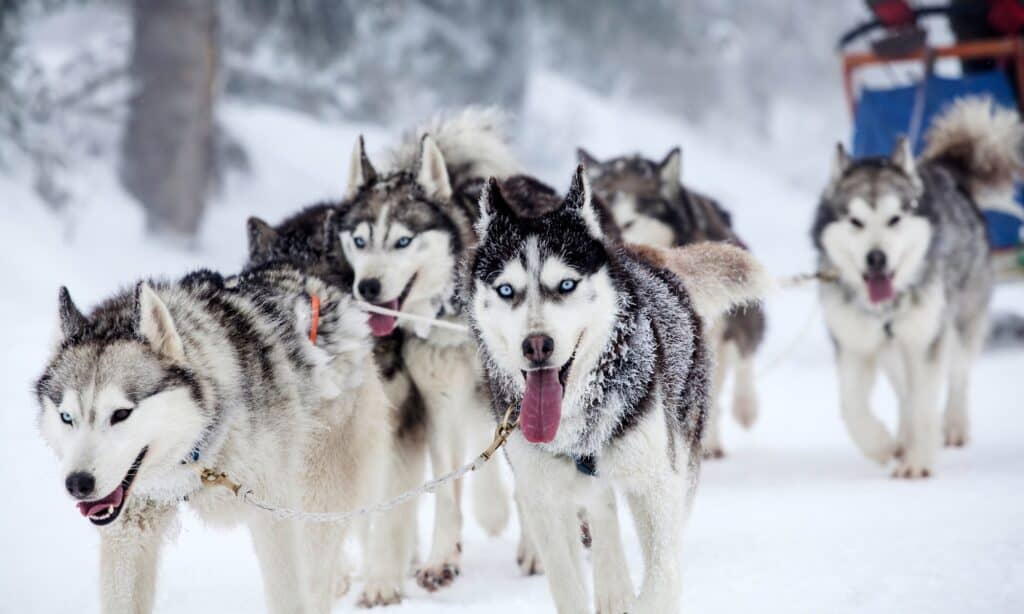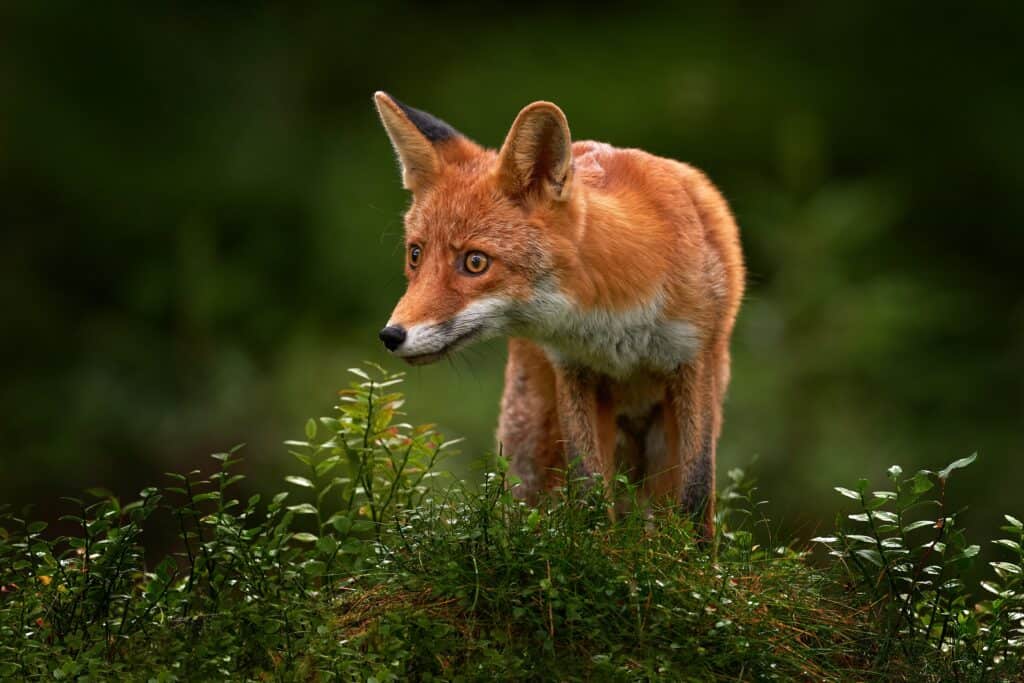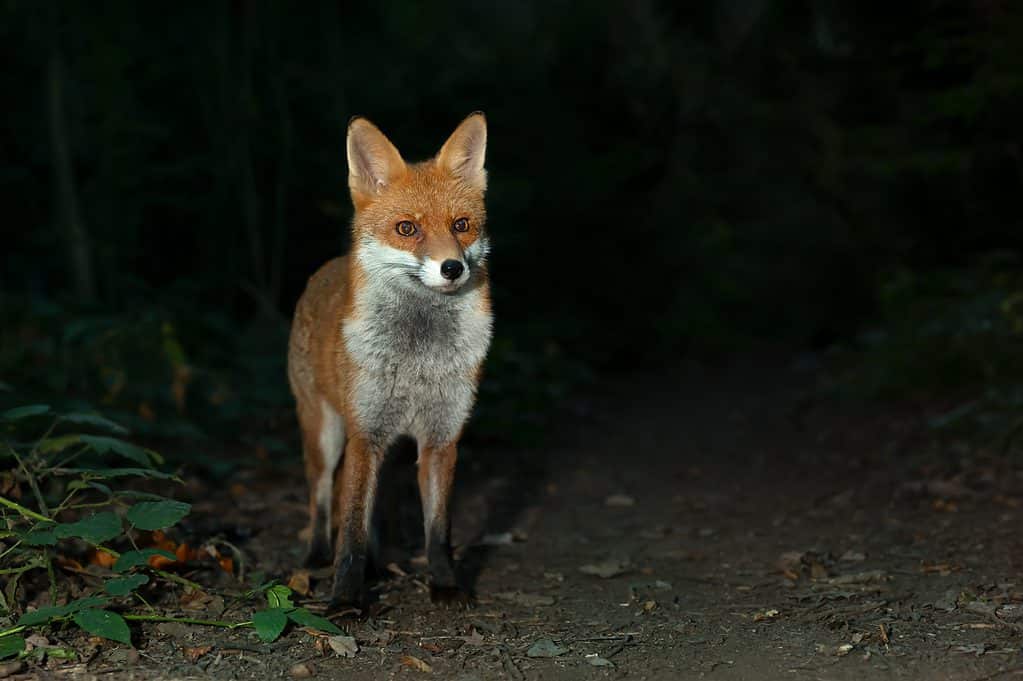Introduction
Huskies are a dog breed beloved by many across the world, characterized as kind, playful, and adventurous. On the other hand, the fox is often seen as sly, clever, and cunning. Furthermore, the husky is larger and stronger than the fox, but the fox is often able to outwit many hunting dogs and traps. The two animals are incredibly different, and they each possess individual strengths that could aid them in a fight. Discover which animal reigns victorious in an epic battle and find out more about the characteristics of both species.
Background on Huskies
Various dog breeds fall into the “husky” category. However, most people associate the term “husky” with the Siberian husky. Other husky breeds include the Alaskan malamute, Labrador husky, miniature husky, Samoyed, and more. Since the Siberian husky is the most well-known husky breed, the Siberian husky is the focus of this epic battle.
Siberian huskies originated in Siberia, which is a geographic area covering the eastern portion of Russia. Siberia is famous for its climate, which consists of fierce, chill winters and little precipitation. In fact, temperatures in Siberia have been recorded as low as -90ºF during winter. The Siberian husky, though, thrives in this climate.
The dog breed was raised as a working dog by an indigenous people group in the region, called Chukchi. The Chukchi people used Siberian huskies as sled dogs, which required the dogs to pull sleds over thick ice and snow. Eventually, the Siberian husky was introduced to Alaska, where it participated in sled dog races. The breed became famous in these competitions and a natural winner of sled dog races.

Historically, Siberian huskies were trained to pull sleds by the Chukchi people group. Now, Siberian huskies pull sleds in sled dog races.
©iStock.com/8213erika
Husky Temperament
In addition to its athleticism and hard-working spirit, the Siberian husky is considered intelligent and kind. The dog gets along well with humans and children, being playful. However, the Siberian husky is also highly independent and stubborn, meaning that training the breed can prove difficult. This breed also enjoys being around other dogs, as it is outgoing and active.
Dangers of Huskies
Overall, huskies are not dangerous, especially to humans. In fact, only 3% of dog bite-related human fatalities that have occurred are attributed to husky bites, as of 2017. Huskies may unintentionally harm children, though. The breed becomes excited easily, increasing its activity. In these instances, a husky may get riled up and accidentally hurt a child. While the husky interprets play between it and children as harmless and fun, small children could become injured if a husky wrestles against them or pushes them around.
In addition, huskies may hunt and kill small animals, including livestock. While the breed is not typically used in hunting today, the primal instinct of the dog is to attack and kill prey. Therefore, the husky may go after a variety of animals, such as chickens, goats, sheep, and household pets. They may attack cats, hamsters, and other animals inside the home. Furthermore, huskies do not get along well with cats, and they may engage in a physical conflict with a pet cat. Therefore, huskies can be dangerous to small children and animals, but they are also friendly dogs with few aggressive tendencies.

Huskies are a friendly breed, but they may attack small animals or pets.
©iStock.com/KM Photography
Background on Foxes
Like huskies, foxes belong to the dog family. Around 10 species are classified as true foxes. For instance, the red fox is the most common fox species, and it exists throughout Europe, North America, Africa, Asia, and some other locations. The gray fox primarily resides in North America, and the South American fox includes five distinct species. Other fox species are the Arctic, bat-eared, and crab-eating foxes.
The red fox is likely the most well-known species of fox, as it has the largest distribution of all other fox species. In addition, the red fox has the largest distribution of any other land mammal. The coloration of the red fox is a mix of red and brown with a white-tipped tail. The fox also has black legs and black ears. Although, this coloration only applies to the most common type of red fox. Some foxes have silver or black fur, and others may even have hints of yellow in their coat.
Due to their side distribution, foxes can live in a wide variety of habitats and climates. Some may reside in the desert while others can be encountered in the tundra. Furthermore, many red foxes live in forested areas or near farmland. Other individuals of this species may venture as far as the city.
The diet of the red fox includes small mammals like rabbits and mice. In addition, they may capture and kill birds. However, these creatures are omnivores, meaning they eat both meat and vegetation. Therefore, the red fox may search for fruit, seeds, or grains to consume. Though perhaps a less desirable meal, the red fox also feasts on dead animal carcasses and garbage, such as leftover food thrown away by humans.

The red fox has the largest distribution of any other land mammal.
©Ondrej Prosicky/Shutterstock.com
Fox Behavior
One characteristic that most people associate with foxes is that they are cunning. While this feature has been repeated in fairytales and novels for centuries, there is some truth to the description. Foxes are highly intelligent animals, and they are often characterized as sneaky when hunting prey. Foxes typically hunt at night, and their nocturnal behavior adds to their mysterious persona.
Furthermore, the den of a fox remains underground, which may appear secretive, but the den aids foxes in avoiding predation. Finally, foxes are often able to outwit hunters and hunting dogs. Many fox traps are ineffective at catching foxes due to the creature’s cleverness. In addition, foxes are generally considered smarter than many dog breeds, allowing them to outwit some hunting dogs.
Dangers of Foxes
Like the Siberian husky, foxes are not dangerous to humans, except in rare cases. Foxes may carry parasites and rabies. In fact, foxes are usually the main carriers of rabies throughout several countries. Rabies is a disease that alters the central nervous system. In animals, rabies is likely to result in death. Humans can receive rabies from foxes, especially through a bite. While foxes that are considered healthy do not attack humans, rabid foxes may bite humans, transmitting rabies and infecting them. Therefore, rabid foxes should always be avoided.
Foxes are hunters that stalk, catch, and kill prey. However, their prey is small, and they often rely on animal carcasses for sustenance. In addition, red fox populations kill an incredible number of ducks every year; approximately one million ducks die annually on North American prairies due to attacks by foxes. The fox is surely an agile hunter that can overcome small prey, but it does not engage in conflict with other predatory animals. Foxes may attempt to defend themselves if threatened, but they are likely to run away from conflict, rather than to engage. Therefore, foxes do not partake in fights with other predatory land animals.

Foxes are often characterized as cunning because they are highly intelligent and able to outwit hunters.
©Giedriius/Shutterstock.com
Husky vs. Fox: A Comparison
| Characteristics | Husky | Fox |
|---|---|---|
| Weight | 35 to 60 pounds | 10 to 15 pounds |
| Height | 20 to 24 inches | 15 to 16 inches |
| Color | Tan, gray, and black and white | Reddish brown, black, silver, and yellowish brown |
| Temperament | Playful, friendly, adventurous, smart, and stubborn | Cautious, somewhat solitary, intelligent, shy, and clever. |
| Bite force | 320 PSI | 85 to 92 PSI |
| Dangers | May accidentally hurt small children; may kill livestock, pets, or other small animals. | Rabies and parasites; hunts small mammals and birds |
| Aggression | Low | Low |
Which Animal Would Win in a Fight: Husky or Fox?
In an epic battle between a husky and a fox, the husky would claim victory. While a fox could outsmart the husky and flee from the fight, the husky has a considerable size and strength advantage over the fox. During a physical fight in which the fox is unable to flee, it would defend itself. However, it would be no match for the massive husky.
The husky can weigh anywhere from two to six times greater than the fox. In addition, the husky stands around five to 10 inches taller than the fox. Finally, the bite force of a husky is significantly stronger than that of a fox. In this battle of brains versus brawn, strength beats out the cleverness of a sly fox, crowning the husky as the winner of this fight.

The husky is the winner of this epic battle due to its advantages of strength, size, and bite force over the fox.
©Kateryna Orlova/Shutterstock.com
Ready to discover the top 10 cutest dog breeds in the entire world?
How about the fastest dogs, the largest dogs and those that are -- quite frankly -- just the kindest dogs on the planet? Each day, AZ Animals sends out lists just like this to our thousands of email subscribers. And the best part? It's FREE. Join today by entering your email below.
Thank you for reading! Have some feedback for us? Contact the AZ Animals editorial team.








